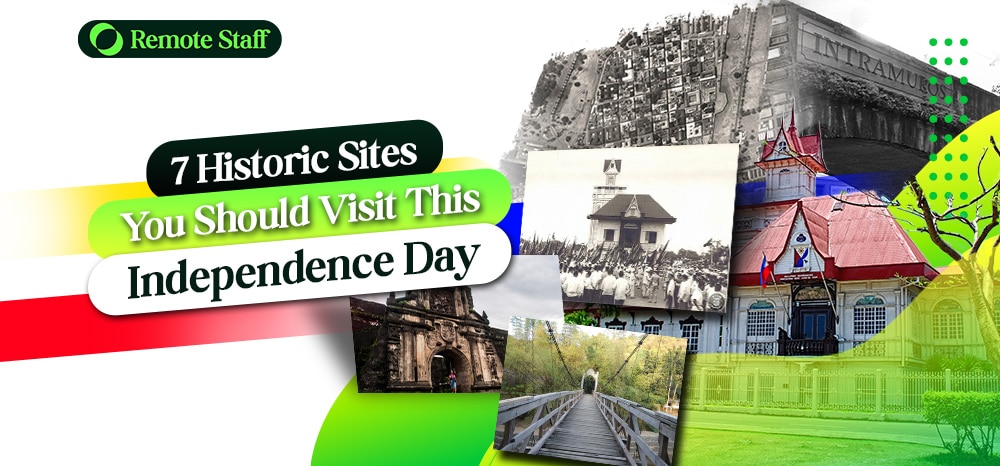Are you looking for a way to celebrate our upcoming independence day while satisfying your wanderlust? If so, why not utilize this long weekend and visit the many historic sites related to our independence day?
Here’s a bit of background regarding this national holiday. It wasn’t always on June 12. Originally, it was on July 4, because on that day in 1946, America granted the Philippines its independence.
However, during the term of President Diosdado Macapagal, he changed it to June 12 commemorating then-General Emilio Aguinaldo’s proclamation.
To honor such a colorful history, why not use this long weekend to visit the many historical tourist spots in the Philippines? Not only will you get to spend time with your loved ones, but you’ll also learn more about our country’s origins.
To help you plan your itinerary, here are seven of the best places to visit this upcoming independence day.
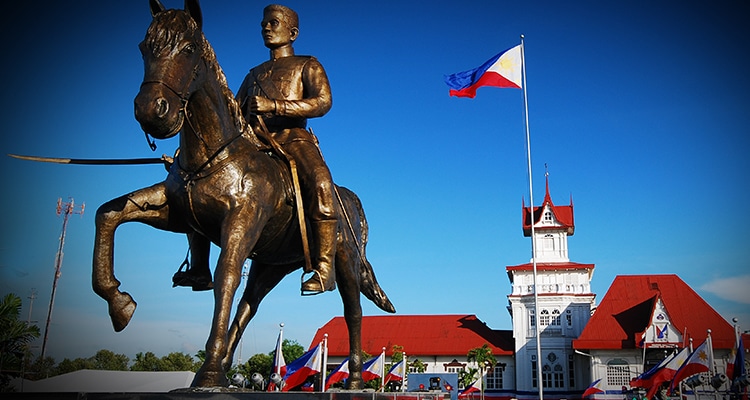
Aguinaldo Shrine Kawit, Cavite.
No discussion about Philippine independence day is complete without mentioning the Aguinaldo Shrine. This house was where General Emilio Aguinaldo proclaimed Philippine independence.
In addition, it was also the place where the Philippine flag was first unfurled and where the national anthem was first played. And every June 12, Philippine officials hold a flag-raising ceremony in Aguinaldo’s home to commemorate this event.
Today, Aguinaldo Shrine is a national shrine and a museum of artifacts related to the Declaration of Independence. Aside from the museum, Gen. Aguinaldo’s house also has many hidden passageways and rooms where the revolutionaries used to store away arms and critical documents.
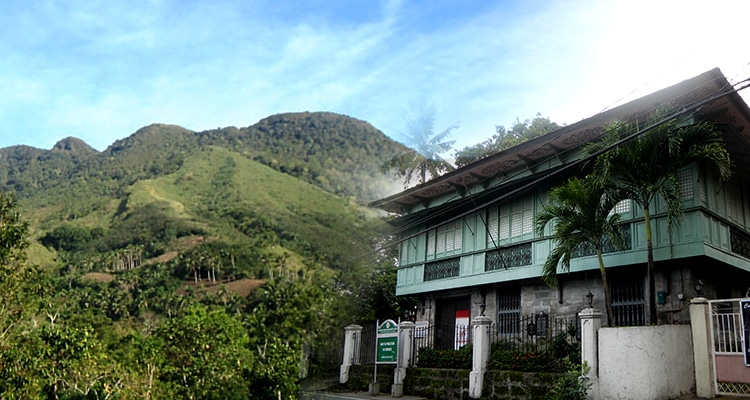
The Bonifacio Trial House and Mount Buntis/Magpatong Maragondon, Cavite.
While visiting Cavite, another of the historic sites related to our independence day you should consider visiting are the Bonifacio Trial House and nearby Mount Buntis and Magpatong in Maragondon.
The mansion stood witness to Aguinaldo’s government putting Andres Bonifacio on trial for treason. Today, it is a museum containing life-sized dioramas depicting Bonifacio’s trial.
If you’re up for a hike, you can also visit the nearby Mt. Buntis and Magpatong. These two mountains are believed to have been the execution site of Andres Bonifacio and his brother Procopio. A shrine has been erected at the foot of the two mountains commemorating this tragic event.
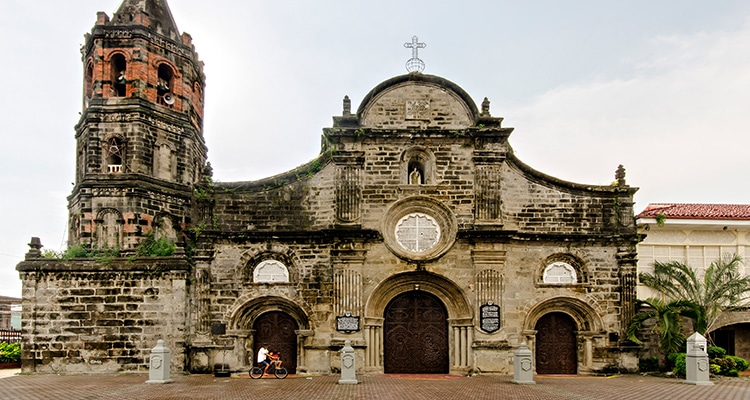
Barasoain Church, Bulacan.
Cavite isn’t the only place with many historic sites you can visit this independence day weekend. The nearby province of Bulacan also has plenty of historical tourist spots worth visiting.
And one of the most well-known historical sites in the province is the Barasoain Church in Malolos. This church was where the first Philippine Congress was held on September 15, 1898, to draft what would later be called the Malolos Constitution.
In effect, Barasoain Church is where the First Philippine Republic was established. Its other titles include: “The Cradle of Democracy in the East” and “The Most Important Religious Building in the Philippines.”
Even today, mass is still held in the church, and its convent houses the Museo ng Republika ng 1899. The latter presents events from the war against Spain and later against the United States for Philippine independence.
It also houses the original carriage used by President Aguinaldo during the Malolos Congress and reproductions of stereographic cards from the Philippine-American War.
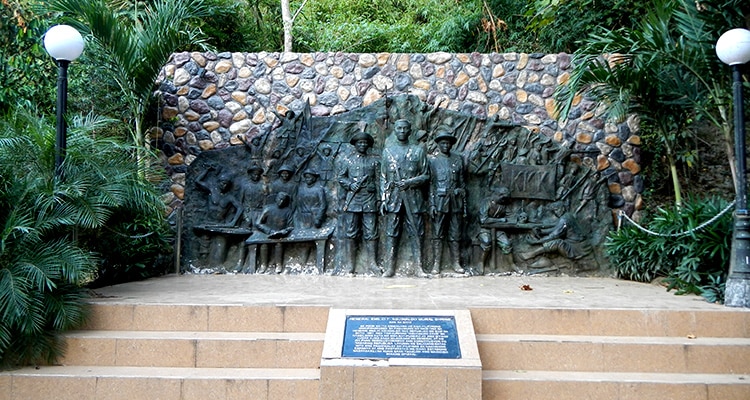
Biak-na-Bato National Park, Bulacan.
Another historical site in Bulacan that you shouldn’t miss is the Biak-na-Bato National Park. Located in Barangay Biak-na-Bato in San Miguel, Bulacan, it was also the seat of the Biak-na-Bato Republic, where Gen. Aguinaldo’s forces retreated to and established their headquarters after being pushed back from Cavite.
Besides its historical significance, it is a popular eco-adventure destination for people living in Manila and nearby provinces. It is located just eighty kilometers (80 km) northeast of Manila, to be more specific.
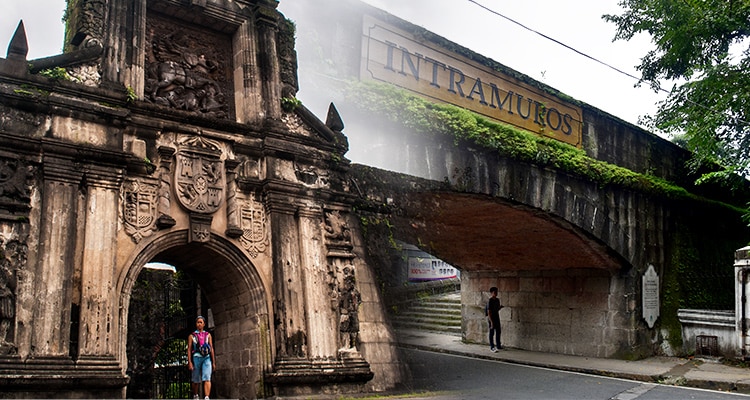
Intramuros, Manila.
If you don’t want to stray too far during the long weekend, the walled city of Intramuros is a great destination. The former capital is home to the Manila Cathedral and San Sebastian Church, the latter being the oldest Chuch in the Philippines.
You can also visit Casa Manila, a three-story Filipino colonial house depicting life during the Spanish colonial period. There are also many nearby museums you can visit here, such as the Museo de Intramuros, Chinoy Museum, and the National Museum.
Other activities include touring the city via a bamboo bike, eating at the Cafe Intramuros and the Belfry Cafe, and visiting the Palacio del Gobernador: the former seat of the Governor-General in the Philippines.
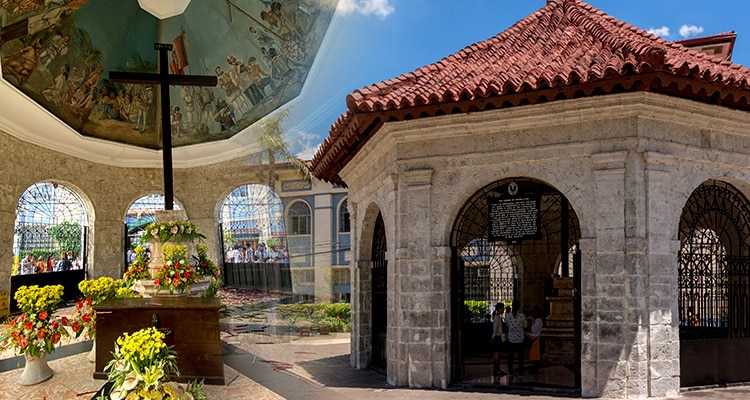
Magellan’s Cross, Cebu.
Shifting from Luzon to Visayas, one of the most well-known historical tourist spots in Cebu, or even in the Philippines, is Magellan’s Cross. This site houses the cross placed by explorers of Magellan’s expedition when they first reached Cebu on April 21, 1521.
The Cross is in a Pavillion near the Basilica del Santo Niño in Cebu City. One fact about it is that the “cross” we see today is actually a casing for the original one in 1835. This was done to protect the original one from people shaving off bits of it due to the belief it has miraculous powers.
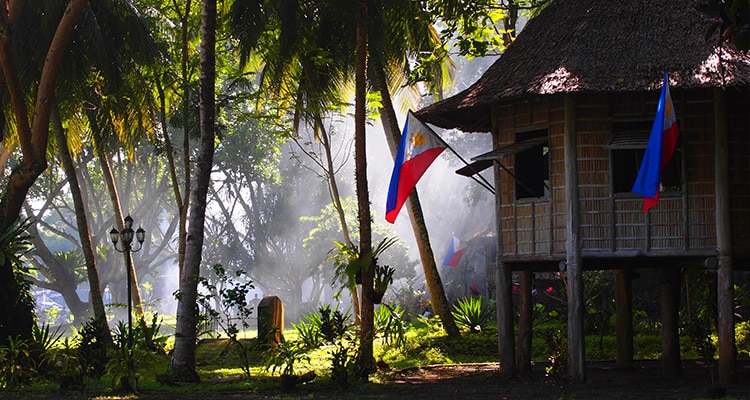
Rizal Shrine Dapitan City, Zamboanga del Norte.
For those planning a long trip this weekend, consider going to Dapitan. Aside from its scenic views and beaches, the city is also known as the place where Dr. Jose Rizal spent time in exile.
When visiting Dapitan, one tourist spot you shouldn’t miss is the Rizal Shrine, Dr. Rizal’s more or less sixteen-hectare (16 ha) estate there. Here you’ll find five reconstructed houses made of nipa and bamboo built by Rizal during his exile. These are:
- Casa Residencia: Rizal’s main house and where his mother and sisters stayed during their visits.
- Casa Redonda: An octagonal stilt house that served as Rizal’s clinic and where his students stayed.
- Casa Cuadrada: Literally “square house.” It served as Rizal’s workshop and as a secondary place for his students to stay in.
- Casitas de Salud: The health houses. These two structures were originally tea houses. Later on, they were converted into a health clinic accommodating patients from different municipalities.
- Cocina: This outdoor kitchen featured a traditional benggerahan (scullery) and kalan (a firewood-fueled clay stove).
Other features include a dam built by Rizal, an aqueduct, a reservoir, an amphitheater, and a museum.
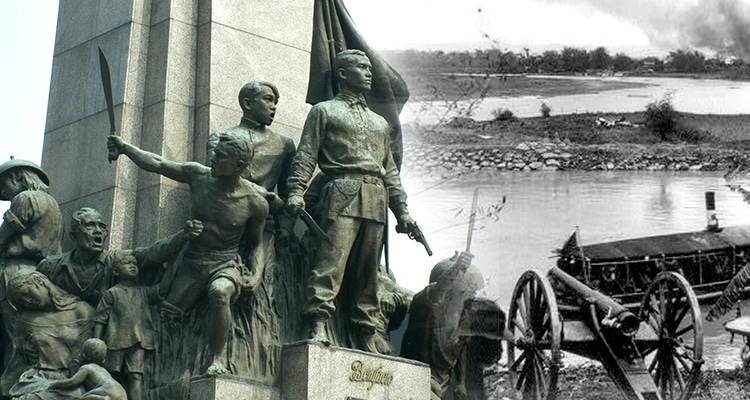
It’s More Fun (and Historical) in the Philippines.
The Philippines has plenty to offer to tourists, both foreign and domestic. Aside from the white-sand beaches, colorful festivals, and delicious food, our rich history is another reason why we have so many tourist attractions.
And this coming long weekend, to celebrate Independence Day, why not visit the above-mentioned historic sites and immerse yourself in our country’s history? These sites witnessed events that helped shape our nation and shouldn’t be forgotten.
Want to go on a vacation but don’t have the funds or the flexibility because you don’t have an online job? Remote Staff is here to help. Our jobs list has various positions available for you to choose from, so you’ll never run out of options.
Good luck, and happy Independence Day!

